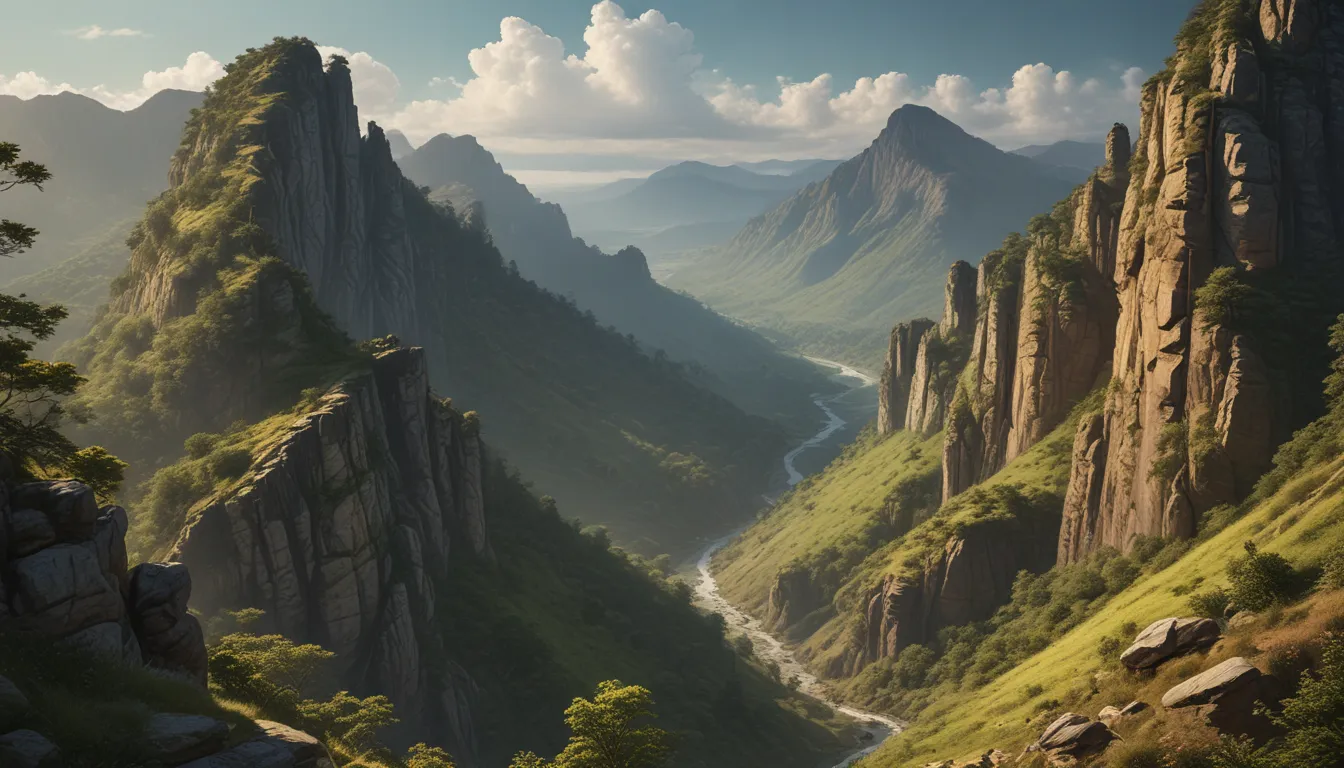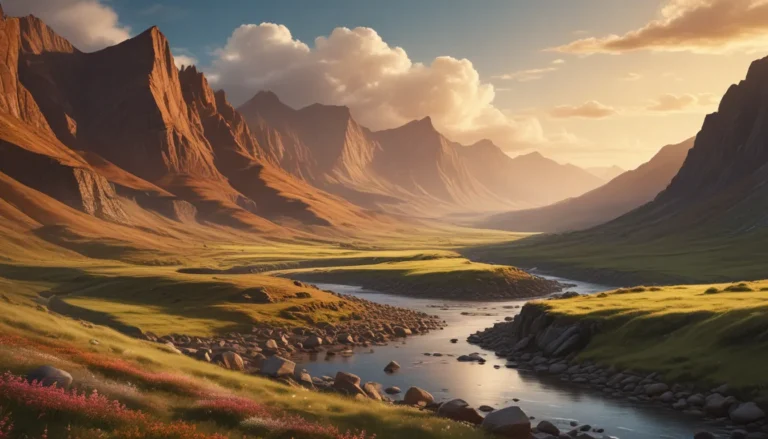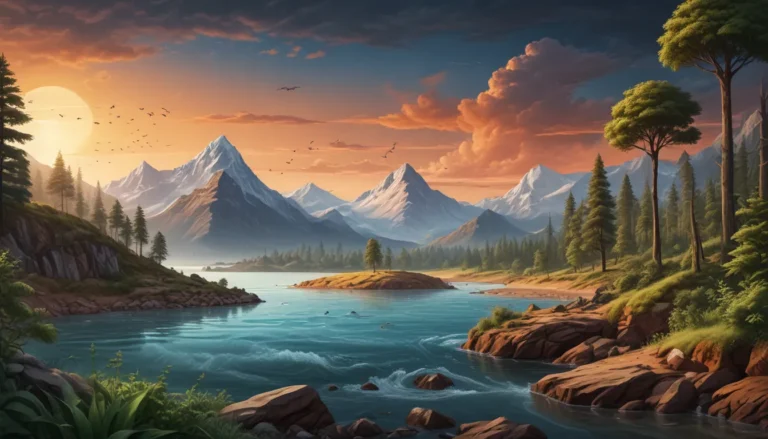A Note About Images: The images used in our articles are for illustration purposes only and may not exactly match the content. They are meant to engage readers, but the text should be relied upon for accurate information.
Have you ever marveled at the towering cliffs of the Grand Canyon or the breathtaking views of Table Mountain in South Africa? These awe-inspiring geological features are known as escarpments, and they offer a glimpse into the incredible beauty and geological history of our planet. From serving as natural boundaries to shaping landscapes and supporting unique ecosystems, escarpments have captured the fascination of explorers, scientists, and nature enthusiasts for centuries.
Unveiling the Mysteries of Escarpments:
Escarpments are like natural boundaries that separate different regions and create stunning landscapes, influencing local climate and supporting unique ecosystems. They are geological time capsules, offering a glimpse into Earth’s history and providing thrilling opportunities for rock climbing and waterfall formation.
The Grand Canyon: An Iconic Landscape
One of the most famous escarpments in the world is the Grand Canyon. Carved by the Colorado River, this massive gorge spans over 277 miles and exposes nearly two billion years of Earth’s geological history. The Grand Canyon serves as a testament to the power of erosion and the geological forces that have shaped our planet over millions of years.
Spectacular Views and Natural Boundaries
Escarpments like the White Cliffs of Dover in England or the Great Escarpment in Africa provide stunning views that attract millions of visitors each year. These geological features often act as natural boundaries, separating highlands from lowlands or marking the transition from one geological formation to another. Their distinct landscapes offer a unique perspective on the diversity of our planet.
Underwater Escarpments and Climate Impact
Not all escarpments are visible above water. Submarine escarpments, such as the Great Barrier Reef slope in Australia, support diverse and unique ecosystems beneath the sea. Escarpments also influence local climates by causing variations in rainfall patterns as air rises over their steep slopes, resulting in the formation of precipitation.
Cultural Significance and Biodiversity
Escarpments hold historical and cultural significance, with many ancient civilizations leaving rock art on these cliff faces. These artworks provide valuable insights into the cultural heritage of past societies. Additionally, the diverse habitats created by escarpments support a wide range of plant and animal species, contributing to the rich biodiversity of these ecosystems.
Exploring the Geological Marvels:
Escarpments offer a glimpse into the Earth’s geological past, with the layers of rock exposed on their steep slopes allowing scientists to study the history of the planet. These geological formations are not only visually stunning but also serve as valuable sources of information for understanding the dynamic processes that have shaped our planet over millions of years.
Adventure and Waterfalls
For adventure seekers, certain escarpments provide thrilling rock climbing opportunities. From the towering cliffs of Mount Roraima in South America to the famous El Capitan in Yosemite National Park, these vertical landscapes attract climbers from around the world. Escarpments can also create natural waterfalls when rivers or streams flow over their edges, resulting in the formation of stunning cascades like Angel Falls in Venezuela or Iguazu Falls on the border of Argentina and Brazil.
Landscape Shapers and Tectonic Insights
Escarpments play a significant role in shaping the overall landscape, contributing to the formation of valleys, canyons, and plateaus. Their unique geological features provide insights into the Earth’s tectonic activity, helping scientists understand the forces at work beneath the planet’s surface. By studying the slopes and fault lines of escarpments, geologists can gain valuable knowledge about the dynamic geological processes that have shaped our world.
Tourist Attractions and Natural Wonders
Many escarpments have become popular tourist destinations, offering visitors the chance to hike, explore, and marvel at the natural beauty of these geological wonders. From the Cliffs of Moher in Ireland to the Niagara Escarpment in North America, these breathtaking landscapes attract travelers from far and wide, showcasing the diversity and beauty of our planet’s geological features.
Conclusion: Embracing Nature’s Wonders
Escarpments are not just geological formations; they are marvels of nature that inspire awe and curiosity. From their stunning beauty to their ecological significance, these natural wonders continue to captivate and intrigue us. Whether you are planning a trip to an escarpment or simply want to learn more about these incredible formations, the world of escarpments offers a world of discovery and exploration.
FAQs: Answering Your Curiosities
-
What is an escarpment?
An escarpment is a steep slope or cliff that separates two different landforms, often formed by faulting, erosion, or tectonic activity. -
How are escarpments formed?
Escarpments are formed through a combination of geological processes, including uplift, erosion, and faulting, creating steep cliffs or slopes in various landscapes. -
Can escarpments be found all over the world?
Yes, escarpments can be found in many parts of the world, with famous examples including the Niagara Escarpment in North America and the Great Escarpment in Africa. -
Are escarpments dangerous?
While visually stunning, escarpments can be dangerous if not approached with caution, requiring adherence to safety guidelines and awareness of potential hazards. -
Can you hike along escarpments?
Yes, many escarpments offer hiking trails for visitors to explore up close, though it’s important to check with local authorities for any restrictions or permits. -
Do escarpments have ecological significance?
Yes, escarpments often serve as important ecological corridors, providing habitat for a diverse range of plant and animal species and creating unique microclimates. -
Are there famous landmarks associated with escarpments?
Yes, many famous landmarks are located along or near escarpments, such as the Victoria Falls in Africa formed by the Zambezi River cascading over the Zambezi Escarpment. -
Can escarpments affect weather patterns?
Yes, escarpments can influence weather patterns in surrounding areas by causing air to rise or descend, leading to localized weather phenomena or influencing wind patterns. -
Are human settlements located on escarpments?
Yes, human settlements can be found along some escarpments, as the natural vantage points and resources provided by these geological features have often made them attractive locations for communities. -
Can you find fossils in escarpments?
Yes, escarpments can sometimes contain fossils, offering valuable insights into past ecosystems and the history of life on Earth through millions of years of geological processes.
As you delve into the wonders of escarpments, remember to appreciate the beauty and significance of these natural formations. Each escarpment tells a unique story of our planet’s history, from the depths of geological time to the richness of biodiversity it supports. Explore, discover, and embrace the captivating beauty of escarpments and the wonders they hold.






